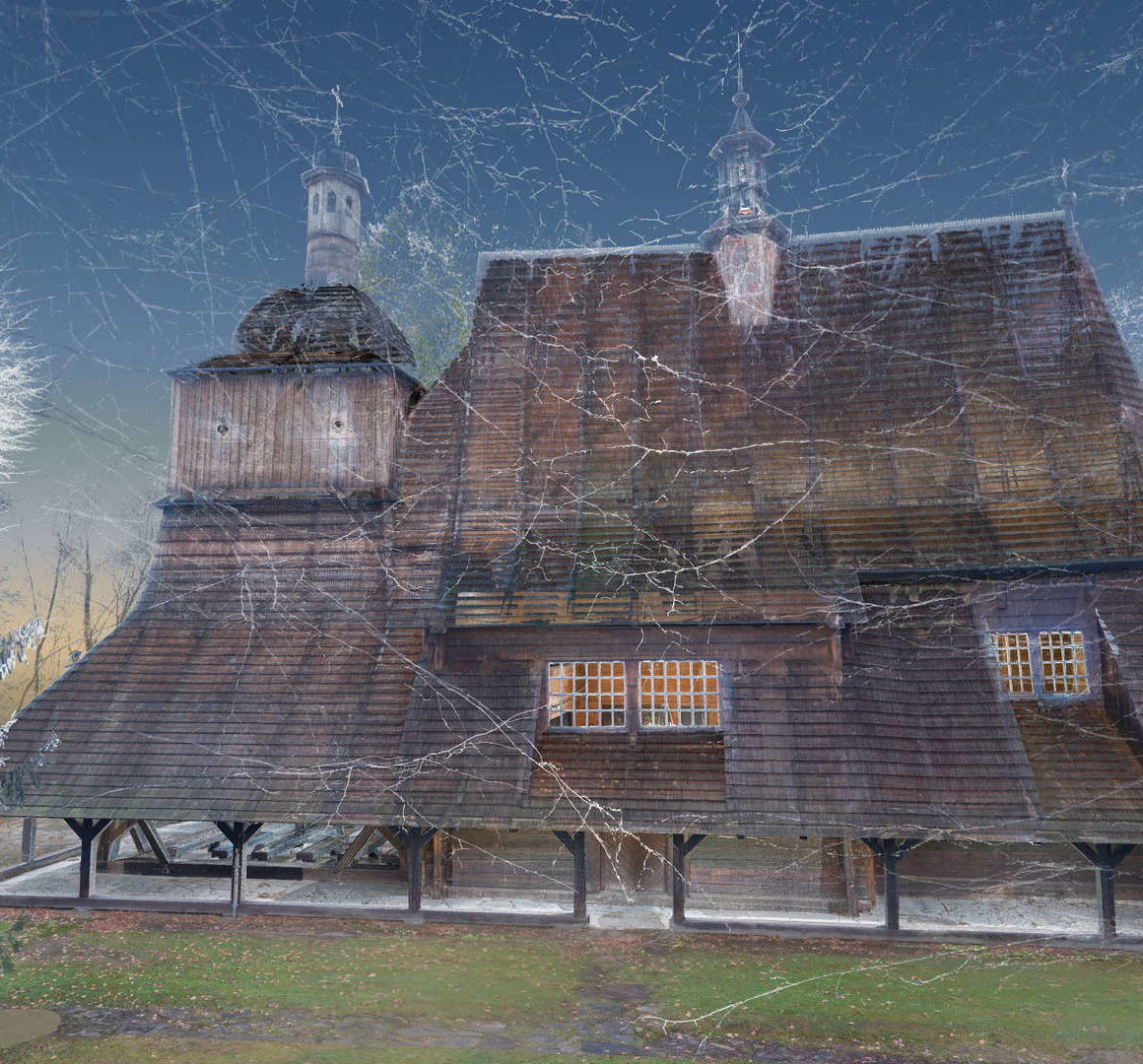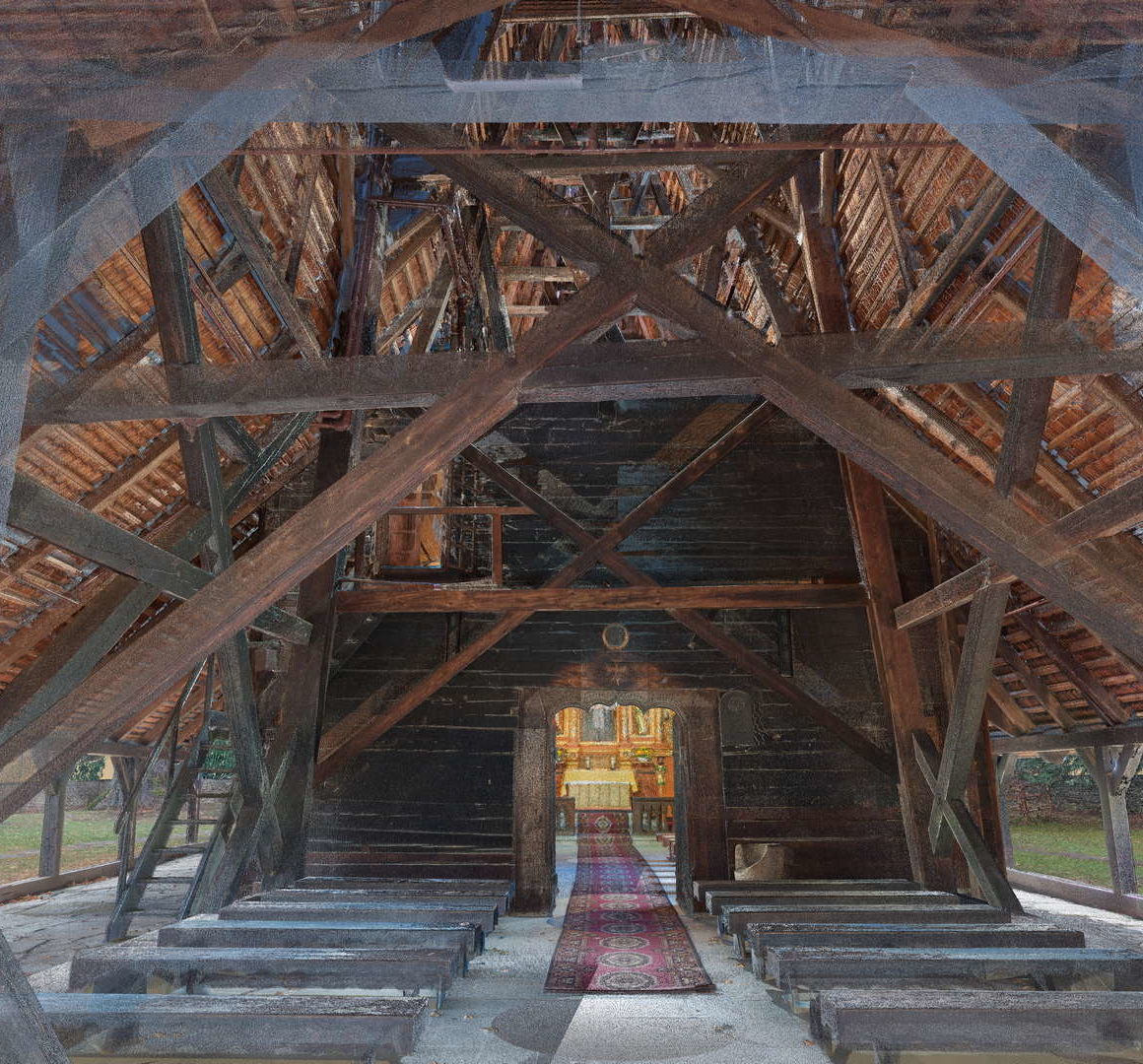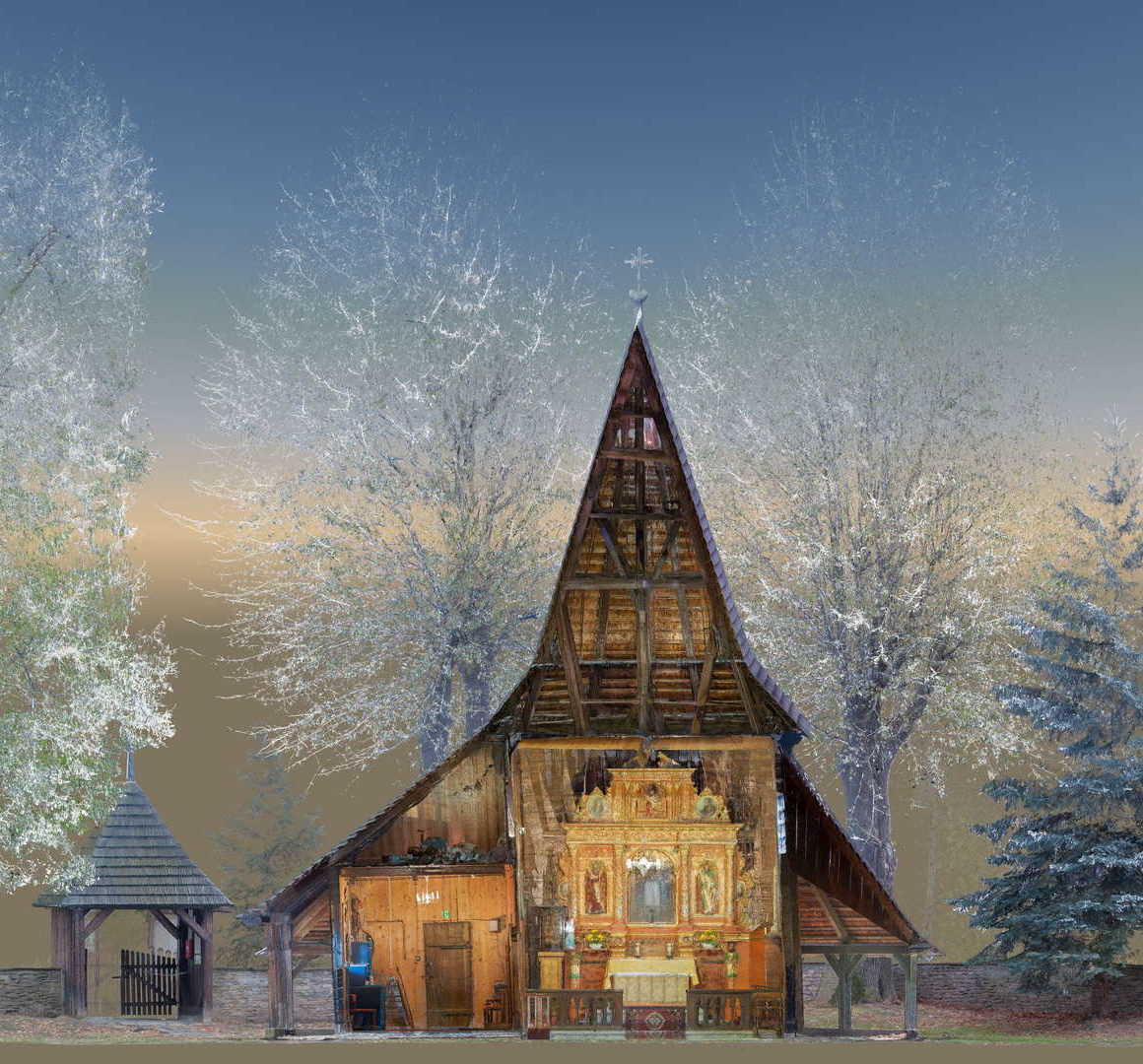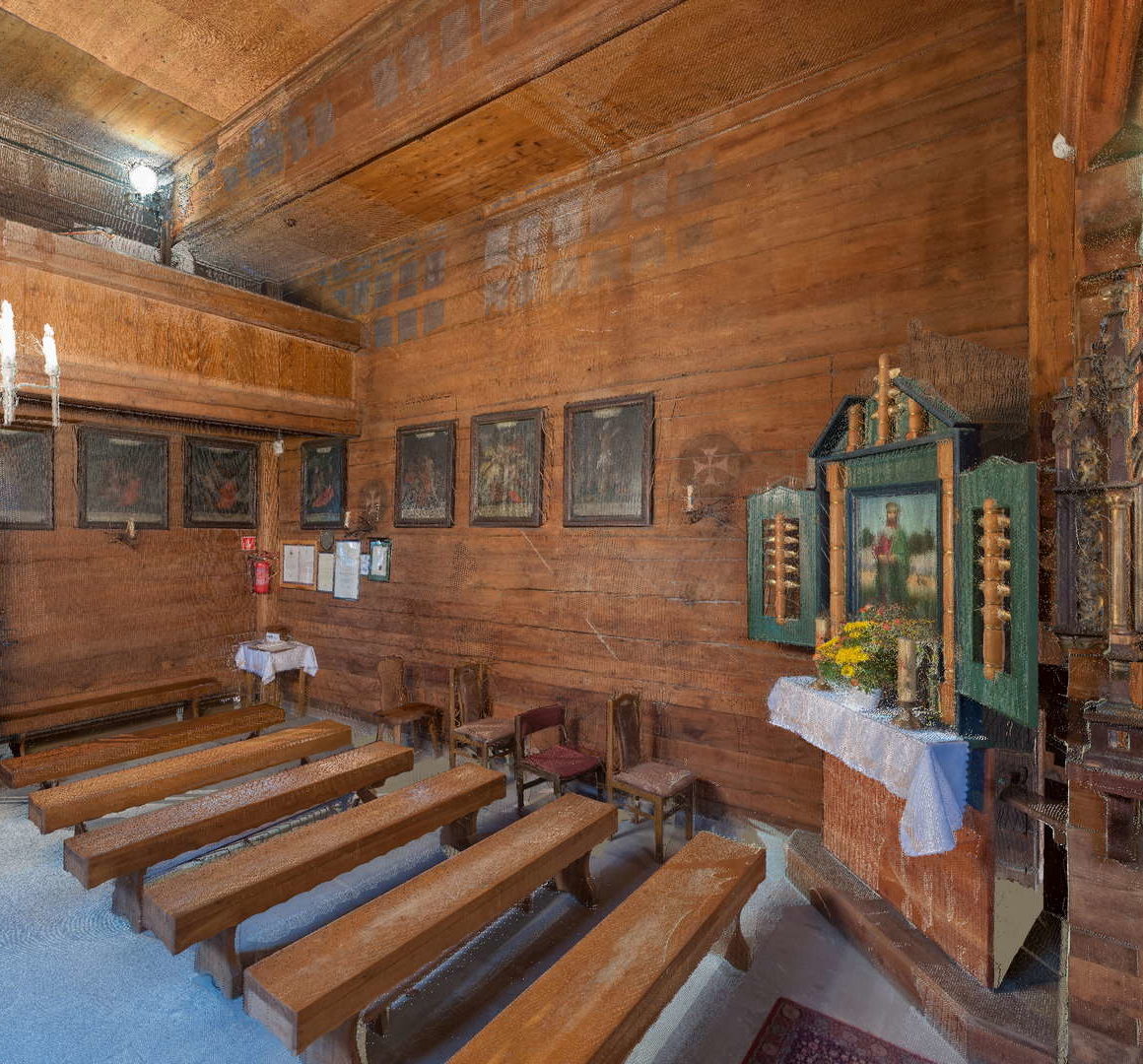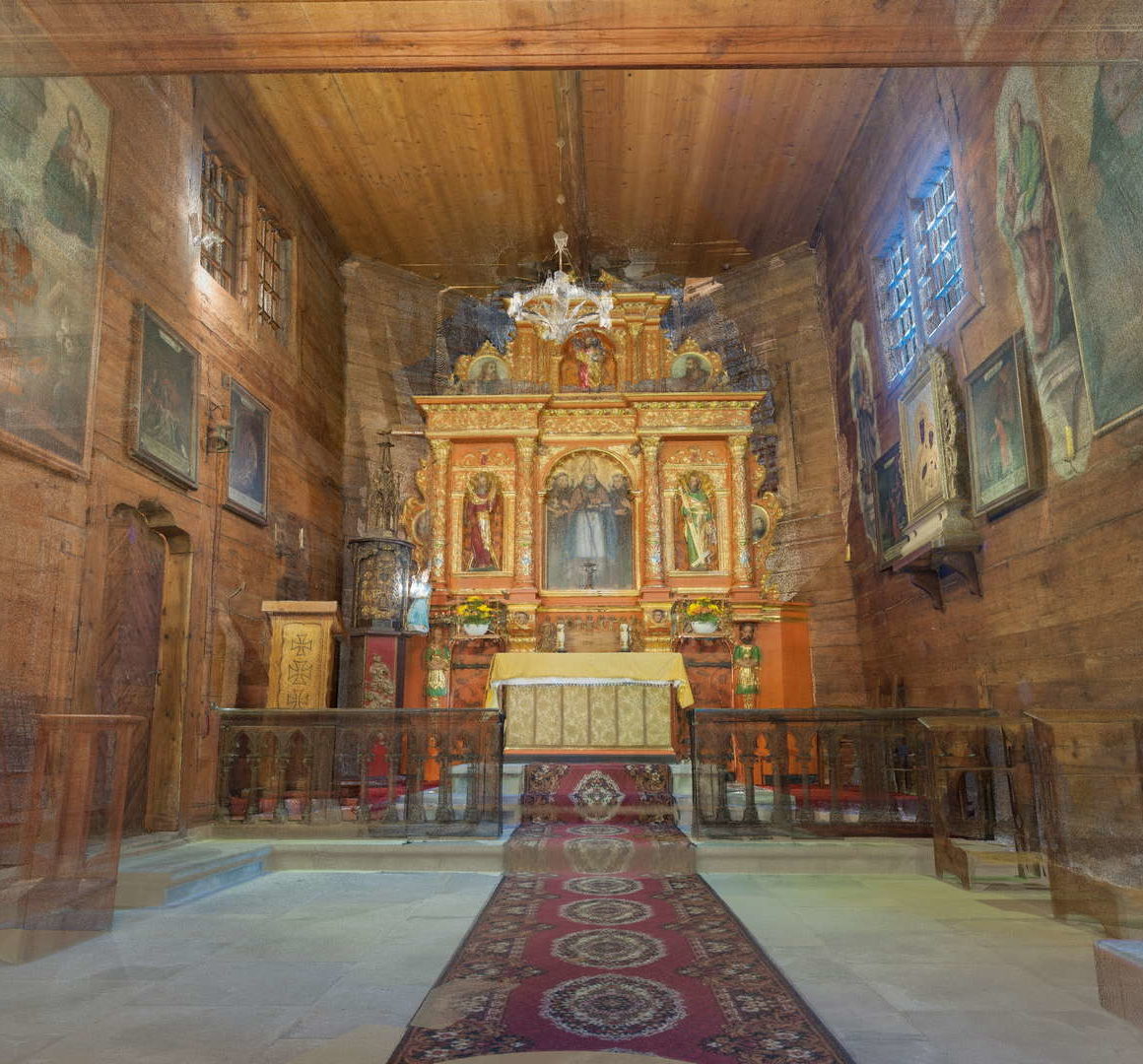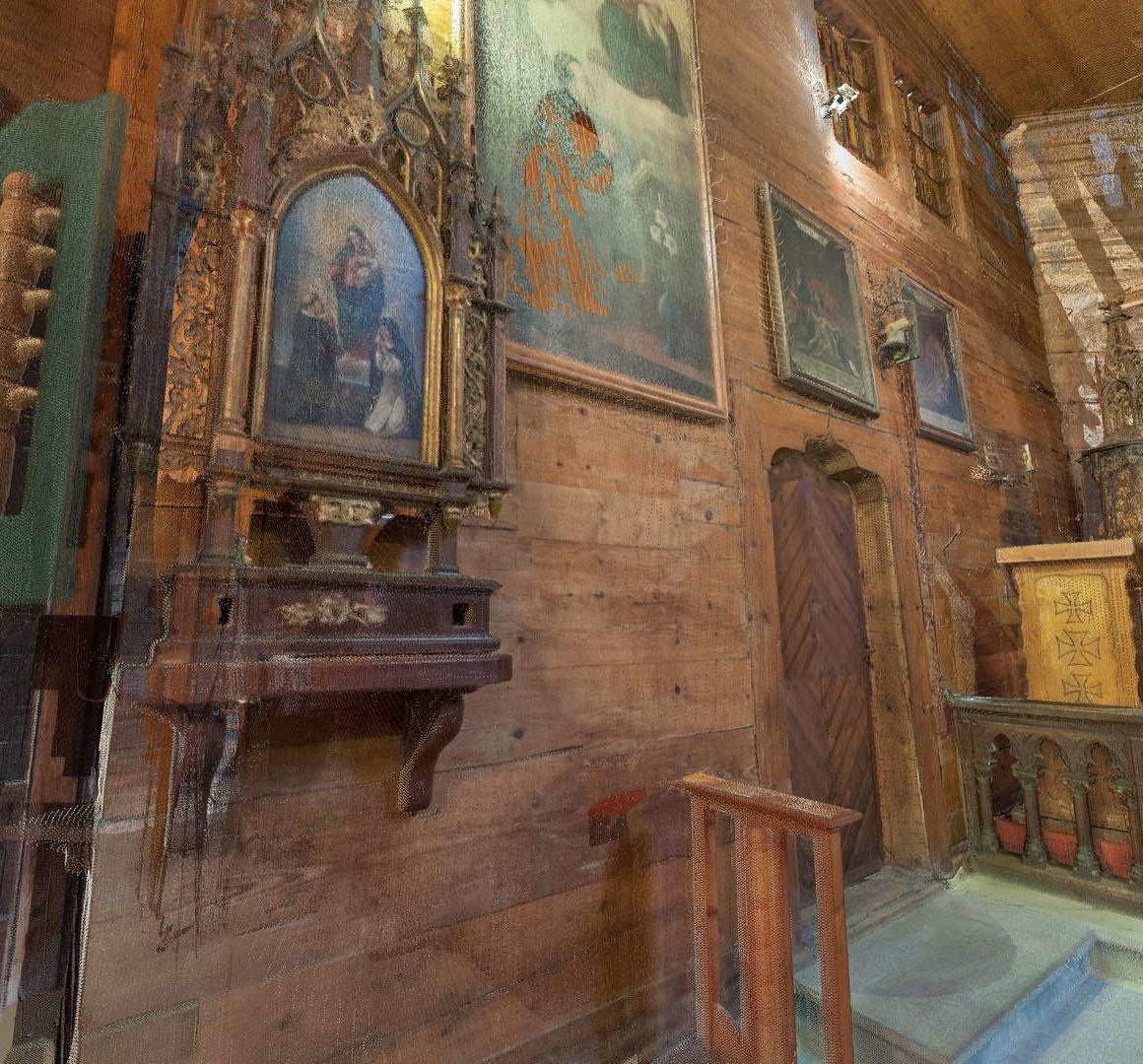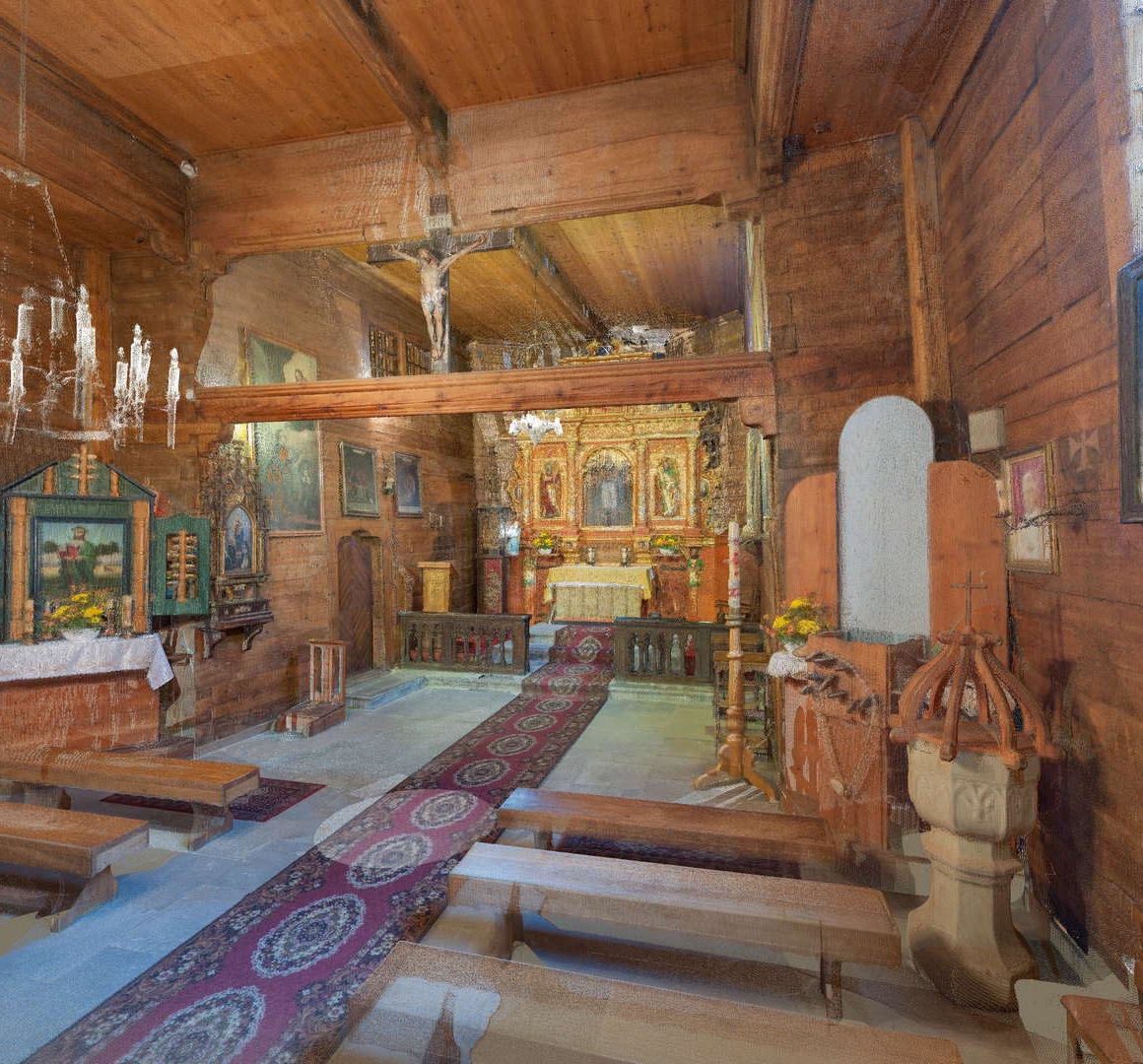Sękowa – Saints Philip and James Church.
Fun fact – 19th-century iconography of the church.
At the turn of the 19th and 20th centuries, the wooden church in Sękowa was considered the most beautiful and the most picturesque wooden church in Lesser Poland.
Its pre-war form was commemorated in the work of enthusiastic Young Poland artists, such as Stanisław Wyspiański, author of a drawing made in 1888 as part of “Teka Grona Konserwatorów Galicyi Zachodniej” (ink on paper, 26 x 26 cm, National Museum in Kraków).
Fun fact – what are “soboty”?
Soboty are roofed arcades which were most often added to Lesser Poland’s Gothic wooden churches in the 17th and 18th centuries. They could be closed or open; their main task was to protect the foundations of the building from rainwater.
It is not entirely clear why such arcades in wooden churches are called soboty (“Saturdays”). The name might derive from the fact that they were mostly used on Holy Saturday: some sources say that, before Easter, some churches would use them as confessionals. Moreover, the arcades were a perfect space for blessing the Easter Basket on Holy Saturday.
Fun fact – what are “lisice”?
Lisice are vertical, two-sided, and bolted tie beams covering the inside and outside walls. They were generally used every 3-4 metres, which would strengthen the structure of the wall.
Lisice were added to the walls of log buildings, i.e. structures built with horizontal logs interlocked at the corners by notching. Such buildings were erected without the use of nails.
Fun fact: Sękowa and its past glory.
The village was founded in the 14th century in the so-called ‘Sękowy Forest’, which belonged to the town of Biecz. After the 16th century, the village belonged to the crown lands of the Biecz Castellany. It is known that, at the end of that century, Sękowa had a functioning school. During the 18th and 19th centuries, the village was an important regional centre of weaving, and had a paper mill as well. At the end of the 19th century, Sękowa exploited oil from 60 wells, extracting an approximate amount of 350 tons per year.
Fun fact – late-Gothic crucifix.
The rood beam holds a late-Gothic crucifix dating back to the beginning of the 16th century. The rood beam was a structural reinforcement of the chancel arch separating the nave and the chancel. The ancient tradition of putting the Holy Cross altar in the middle of the church gave birth to the custom of putting a crucifix on the beam, or the whole Crucifixion group (crucifix and figures of the Mother of God and St. John the Evangelist). The figure of Christ in the crucifix from Sękowa shows the influence of the work of Veit Stoss; the Saviour’s body is tense, his legs straightened and shoulders tilted at a slight angle, similarly to Stoss’ depictions in St Mary’s Church in Kraków or in the parish church in Iwanowice. Other characteristic features include the head on the right shoulder and a thick, almost turban-like crown of thorns. Such elements can be found in many Lesser Poland crucifixes dating back to the beginning of the 16th century (for example, a crucifix from the rood beam of St Mary’s Church in Kraków, crucifixes from churches in Przeworsk and Zborówek or a crucifix from the Benedictine church in Staniątki). These depictions show Christ with his mouth and eyes open and, despite the visible wound in his side, it is difficult to clearly identify the Saviour as dead.
Fun fact – ‘feretron’
The Polish name feretron derives from Ancient Greek phéretron (‘a bier’), in Latin it is called feretrum. In ancient times, these objects were already used in religious worship to carry statues of deities, holding the feretrons with wooden rods.
In the Middle Ages, feretrons and banners became popular worship tools among religious brotherhoods and guilds of craftsmen. The portable paintings were used in processions during religious ceremonies or pilgrimages. Feretrons of brotherhoods of the Rosary were particularly popular, showing the image of the Mother and Child handing the brotherhood members or monks a rosary.
Mary giving the Rosary to St. Dominic, accompanied by Saint Catherine of Siena or Saint Rose of Lima, was a popular motif as well, especially in Baroque painting and graphics. According to legend, Saint Dominic received a rosary from the Mother of God and then became a proponent of rosary prayers himself. This is the depiction that is shown on the 18th-century feretron preserved in the church in Sękowa.


